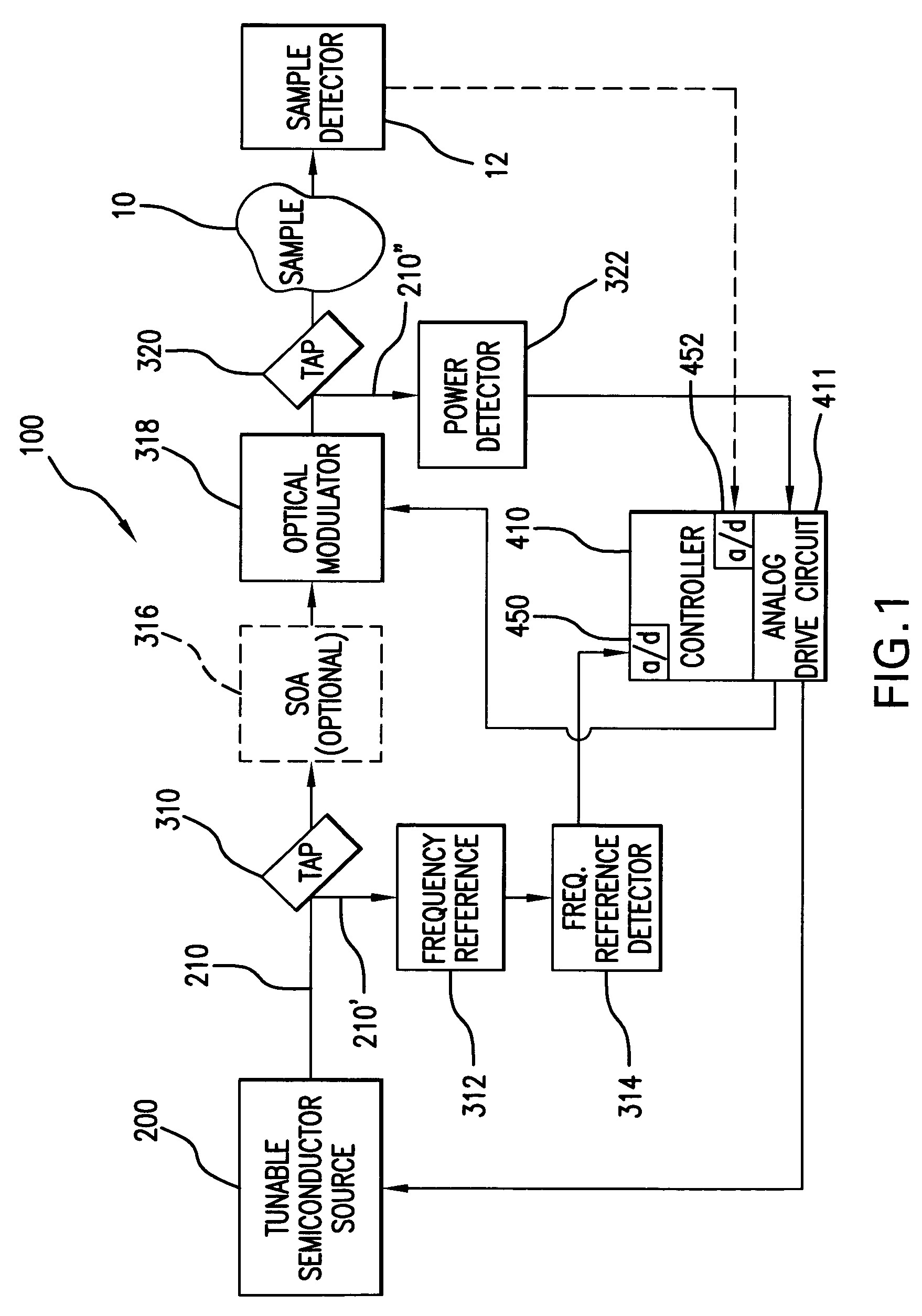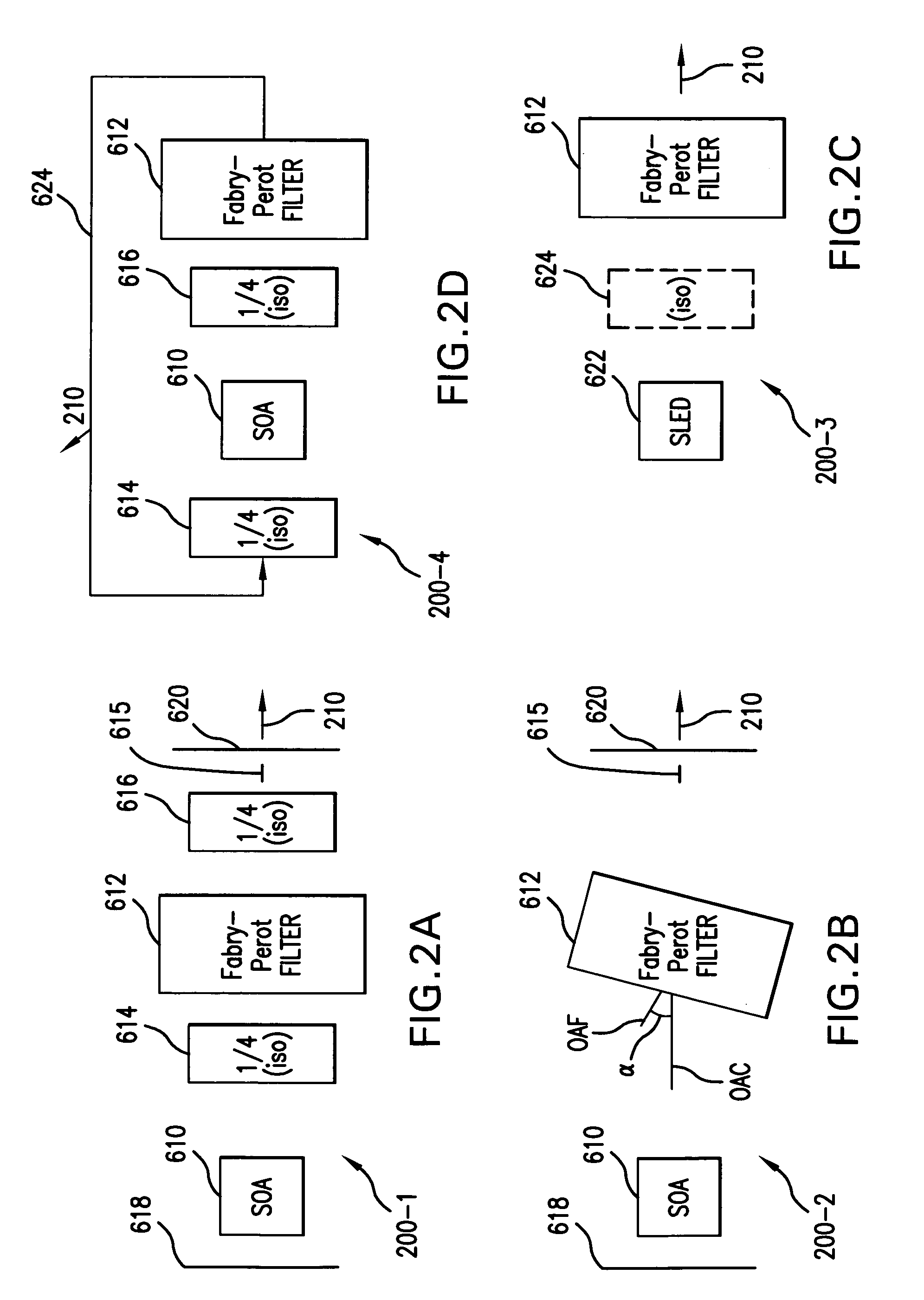Semiconductor spectroscopy system
a spectroscopy system and semiconductor technology, applied in the field of semiconductor spectroscopy systems, can solve the problems of high power consumption of systems, inefficient systems, and excessive sample heating
- Summary
- Abstract
- Description
- Claims
- Application Information
AI Technical Summary
Benefits of technology
Problems solved by technology
Method used
Image
Examples
Embodiment Construction
[0031]FIG. 1 shows a semiconductor source spectroscopy system 100, which has been constructed according to the principles of the present invention.
[0032]Generally, the spectroscopy system 100 comprises a tunable semiconductor source 200. This generates a tunable optical signal 210.
[0033]In one example, the tunable signal 210 is transmitted to a frequency reference tap 310 that diverts a portion of the tunable optical signal 210′ to an optical frequency or wavelength reference 312. In one example, this optical reference is a fixed cavity etalon that provides a number of spectral passbands located within and / or spectrally adjacent the scan band of the system 100. Optionally, a post-amplifier tracking tunable optical filter is sometimes used to filter out or remove any optical noise contributed by the amplifier.
[0034]The signal 210′ that is transmitted through the optical reference 312 is then detected by a frequency reference detector 314. The output of the frequency reference detecto...
PUM
 Login to View More
Login to View More Abstract
Description
Claims
Application Information
 Login to View More
Login to View More - R&D
- Intellectual Property
- Life Sciences
- Materials
- Tech Scout
- Unparalleled Data Quality
- Higher Quality Content
- 60% Fewer Hallucinations
Browse by: Latest US Patents, China's latest patents, Technical Efficacy Thesaurus, Application Domain, Technology Topic, Popular Technical Reports.
© 2025 PatSnap. All rights reserved.Legal|Privacy policy|Modern Slavery Act Transparency Statement|Sitemap|About US| Contact US: help@patsnap.com



